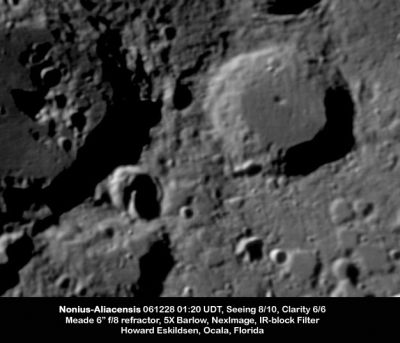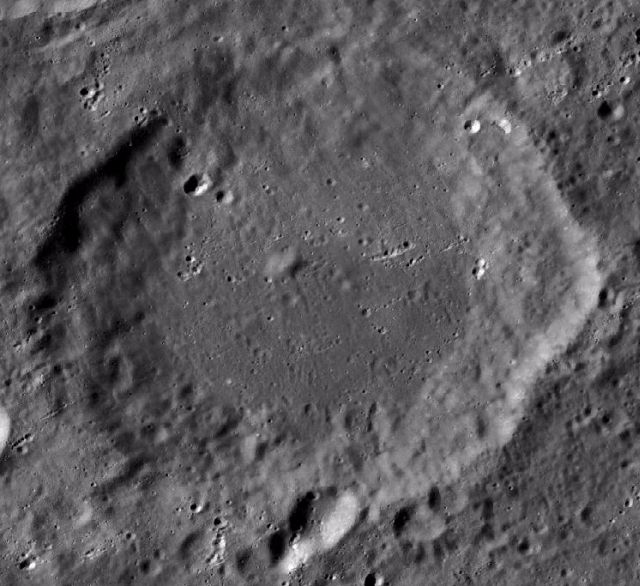Aliacensis
Contents
Aliacensis
|
Lat: 30.6°S, Long: 5.2°E, Diam: 79 km, Depth: 3.68 km, Rükl: 65, Nectarian |


Howard Eskildsen (on the left), picture on the right from LRO.
Images
LPOD Photo Gallery Lunar Orbiter Images Apollo Images
Maps
(LAC zone 95C3) LAC map Geologic map
Description
Description: Elger
(IAU Directions) ALIACENSIS.--This ring-plain, 53 miles in diameter, with its neighbour Werner on the N.W., are beautiful telescopic objects under a low sun. Its lofty terraced border rises at one peak on the W. to the tremendous height of 16,500 feet, and at another on the opposite side to nearly 12,000 feet above the floor. The wall on the S. is broken by a crater, and on the E. traversed by narrow passes. There is also a prominent crater on the inner slope of the N.W. wall. The floor includes a small mountain, several little hills, and a crater.
Description: Wikipedia
Additional Information
Depth data from Kurt Fisher database
- Westfall, 2000: 3.68 km
- Viscardy, 1985: 3.7 km
- Cherrington, 1969: 3.93 km
Central peak is 0.8 km tall Sekiguchi, 1972. - fatastronomer fatastronomer
Nomenclature
- Pierre d'Ailly (Petrus Aliacensis) (1351 – August 9, 1420), was a French theologian, astrologer, and geographer. D'Ailly's Imago Mundi, a work of cosmography, influenced Christopher Columbus in his estimates of the size of world land-mass.
- Satellite crater Aliacensis G was erroneously printed as ALLACENSIS G on LAC 112, page 225 in the REVISED AND UPDATED EDITION of the Clementine Atlas of the Moon, 2012, CAMBRIDGE UNIVERSITY PRESS.- DannyCaes Jan 10, 2013
- Aliacensis Alpha (the central peak of Aliacensis) (see Chart 94 in the Times Atlas of the Moon).
LPOD Articles
Bibliography